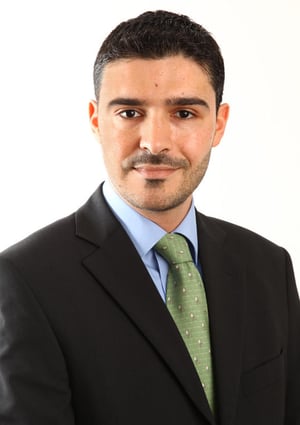The hotel industry saw mixed results from 2018, with hotels in the US enjoying a 3.4% annual increase in profit. It was the third consecutive year of growth in gross operating profit per room (GOPPAR) for hotels in the country.
Hotels in Europe saw GOPPAR up 9.2% on 2017 figures while hotels in the Middle East & North Africa saw a 6% decline in GOPPAR for full-year 2018.
Tracking this data was HotStats, a profit and loss benchmarking service to hoteliers from across the globe.
We caught up with Pablo Alonso, CEO of HotStats, to find out more about what metrics hotels should be tracking, and how they should be using this data.
Here, he talks to us about the challenges facing the global hotel industry, including rising labour costs; offers some sage advice on how to drive top- and bottom-line results, and explains why 2019 is the year in which hotels should be driving rates.
 What are the current challenges facing the hotel industry in the US and Europe in terms of profitability?
What are the current challenges facing the hotel industry in the US and Europe in terms of profitability?
Pablo Alonso: In the U.S., low unemployment and wage growth are conspiring to create a war on talent. According to our data, rooms labour costs on a per-occupied-room basis are up around 4% year-to-date over the same period last year. This is a challenge that will spill over into 2019 and compel hoteliers to be even more vigilant and focused on the bottom line to ensure profitability. In addition, the ability to drive rate will factor into profitability. If average daily rate (ADR) percentage growth is at or below the rate of inflation, it will be difficult for hoteliers to drive higher profitability.
In Europe, uncertainty still around a Brexit plan could negatively impact corporate travel, which could, in turn, be a huge gap that hotels will have to fill.
Demand is up, yet hotels still continue to struggle at driving rate. Why do you think that is?
Pablo Alonso: It’s a classic game of chicken: If a hotel raises its rates versus its competition, they risk losing market share, which ownership doesn’t like. The reality, however, is that driving ADR at the expense of occupancy has a more propitious impact on RevPAR (revenue per available roomand, consequently, TRevPAR (total revenue per available room). The forecasts for 2019 show that demand will still outstrip supply, so it’s incumbent on all hotels to reassess their revenue strategy and drive rates where and when they can.
What are the key metrics hotels should consider when driving revenue and profitability?
Pablo Alonso: There may not be one holy grail key performance indicator (KPI), but TRevPAR and GOPPAR are two metrics that should be on every hotelier’s radar when it comes to driving revenue and profitability.
TRevPAR measures the property’s ability to generate revenue across all operating departments and provides insight into the overall revenue story.
Where TRevPAR focuses on revenues, GOPPAR measures the operation’s ability to convert revenues to operating profit. By tracking trends in both TRevPAR and GOPPAR, hoteliers can develop strategies based on top- and bottom-line performance measures, which can improve overall profitability.
What data and tools can hotels use to determine their most profitable business mix?
Pablo Alonso: A strong benchmarking platform, such as from HotStats, which allows hoteliers to benchmark their profitability versus their competition, along with a strong revenue-management tool, are vital toward assuring a profitable business mix.
While ‘The 5 Ps of Marketing’—Product, Price, Promotion, Place, and People—are as relevant now as they were 20 years ago, relying on technology to Predict the most profitable business mix should also be put in play. And using data toward that is the right strategy.
How can hotels lean on data to make better revenue decisions?
Pablo Alonso: A hotel’s P&L only tells one story: your own. And like-for-like comparison only tells you how well you’ve improved or regressed against yourself. Consulting data through benchmarking should be at the forefront of any hotel’s revenue- and profit-strategy plan. Knowing how your hotel lines up against the competition is intelligence that can be used to make strategic decisions about how to run your business. Without that insight, it’s like going through a Class 5 rapid without a paddle!
How important is data collaboration amongst hotel departments?
Pablo Alonso: Hotel departments, from Rooms to F&B, cannot exist within silos and should be cross-examined for synergies in order to max out such important KPIs as TRevPAR, which takes into account revenue from all aspects of a hotel. RevPAR only accounts for revenue generated by rooms. Today’s hotels, by design, are much more than just rooms, so understanding your TRevPAR is key to running a profitable hotel and is why most owners are now looking more closely at TRevPAR than RevPAR.
What is more profitable: following your Comp Set or striking out on your own path?
Pablo Alonso: You should benchmark against your comp set to see its performance, but you have to carve out your own profit path and not merely ‘be a follower.’ Being a market leader means not being afraid to take chances where others may not. So while it’s imperative to track the data on your competition, you must make your own individual choices based on your hotel. Take in as many inputs as you can to maximize your outputs.
What is your outlook for hoteliers in the US and Europe in 2019/2020?
Pablo Alonso: Absent a black swan type event or recession—which most analysts are confident won’t happen—2019 and, hopefully, 2020, too, will be profitable years for the industry. While we might not see the robust growth that preceded the past few years, the industry is still plugging away, even in the face of what is being forecasted as a torpor in industry metrics. Hoteliers will have to work that much harder to secure a profitable operation. However, with new supply in check (and with interest rates rising this is sure to stay muted) and continued travel demand, hotels should be in the black, dependent on their ability to flow dollars to the bottom line. Much of this will be predicated on a smart distribution strategy and optimizing work force.


